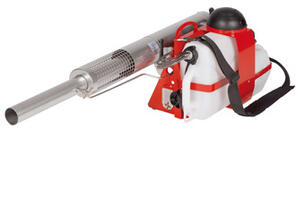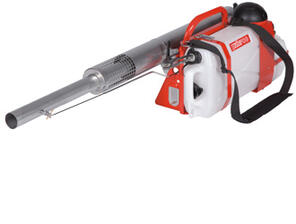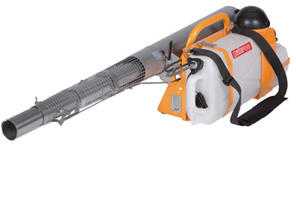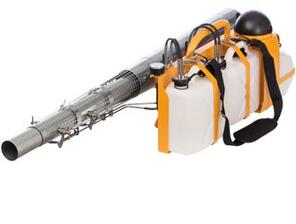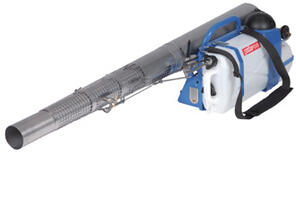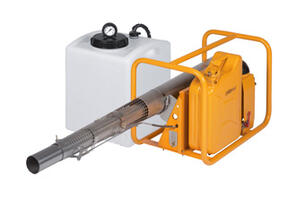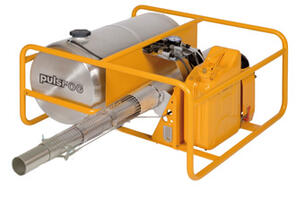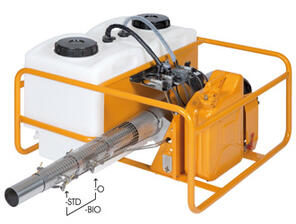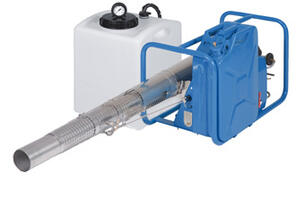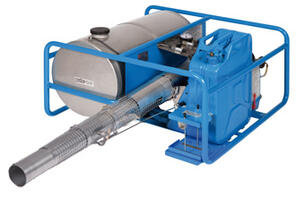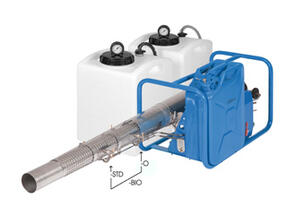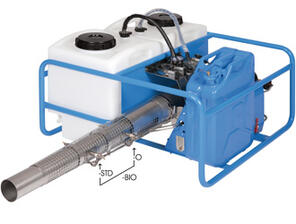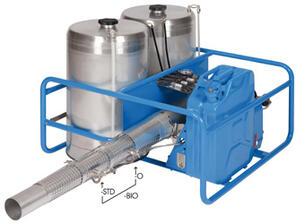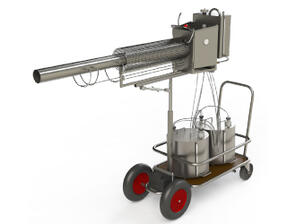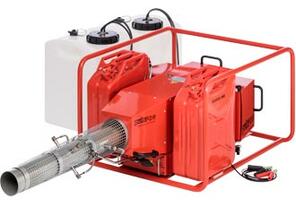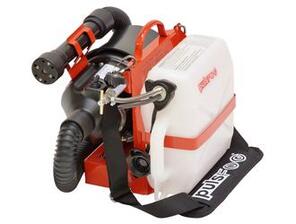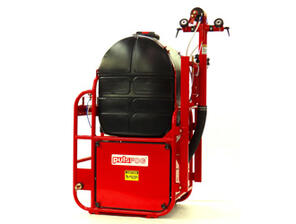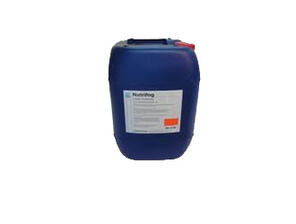pulsFOG K-10-SPe
- Thermal Fogger
- Portable

The task of controlling pests arises with every cultivation period. The traditional method using a sprayer is unpopular because it is labour intensive and often detrimental to health. Up to 80 % of the sprayed liquid runs off the plants and penetrates the ground, affecting the soil fauna with its useful organisms and also the ground water.
Frequently, spraying stains deteriorate valuable crops, and high residues of pesticides often affect the quality of vegetables. Last but not least there are conflicting aims when using a sprayer due to the high amount of water required and the aim of controlling fungal diseases.
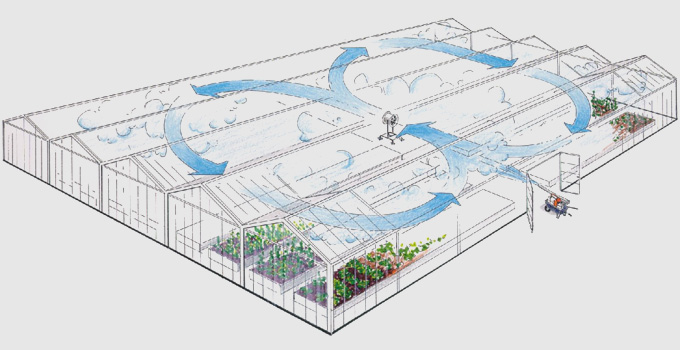
If you converted one litre of a liquid into droplets of 10 µm diameter and distributed the resulting number of droplets evenly on to an area of 1 ha, a theoretical coverage of 19,000 droplets/cm2 would result. This mathematic consideration explains why the total volume of the solution may be reduced to 1/100 without losing its effectiveness in controlling pests. Using the pulsFOG® equipment, volumes of 1,5 – 3,0 l / 1000 m have proved to be effective.
The aim of space fumigation is controlling flying insects such as thrips, whitefly, leaf miner, which are caused to fly up at the same time ("flushing" effect). This is achieved by the action of the gas of certain pesticides on the pests hiding for example on lower leaf surfaces. The insects then become irritated, slip out of their hiding place and receive a lethal dose from air-borne fog droplets.This effect of space fumigation is produced when stable aerosols smaller than 10 µm are generated. The aim of deposition treatment is to produce a dense residue deposit on the leaf surfaces in order to control eating, sucking, and mining pests and as a preventive action against fungal diseases.
Deposition treatment is particularly suitable when using systemic agents, foliage fertilizers and growth retardants. Deposition fogging requires droplet sizes of 10-30 µm. The big advantage of the pulsFOG® fogging technique is that the aerosols with a droplet size of 1-30 µm are merely blown into the air over the crop, settling evenly onto the crop due to their intrinsic properties. If horizontal fans are available the fogger can also be used from a stationary position at the door. The aerosols are then dispersed by air circulation.
The pesticide rate per 1,000 m of greenhouse area is calculated from a spray suspension of 100-300 Iitres of water. If the chemical label indicates only the spraying concentration (e.g. 0,1%), the initial dosage per 1,000 m2 can be determined from the table see download. Initially, use only the minimum dosage for crops in bloom in order to acquaint yourself with the method. In the case of unsatisfactory results the dosage may be gradually increased up to the maximum. The application of rates between medium and maximum is restricted to plants with a high tolerance and showing no blooms. High temperature climatic conditions allow only low pesticide rates. The water volume for liquid formulations is 1,5 -2 litres/1,000 m2. With wettable powder use the higher water rate of 2-3 liters. Add in the end either 250-500 ml VK-2 special or nutriFOG dependent to the plant compatibility.

